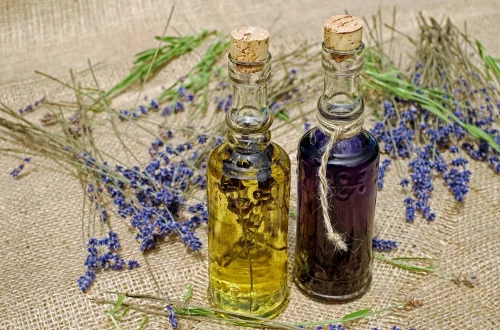
How to Use Fragrance Oil for a Luxurious Aromatherapy Experience
Aromatherapy has gained immense popularity in recent years, becoming a cherished practice for those seeking relaxation and an escape from the everyday hustle and bustle. One of the key components of this soothing experience is the use of fragrance oils, which are derived from various natural and synthetic sources. These oils not only enhance the ambiance of your surroundings but also evoke powerful emotional responses and create a serene atmosphere.
Incorporating fragrance oils into your daily routine can transform ordinary moments into extraordinary experiences. Whether you are unwinding after a long day, practicing mindfulness, or simply wanting to elevate your living space, the right fragrance oil can be your perfect companion. The versatility of these oils allows for a wide range of applications—from diffusers to baths and massage oils—making it easy to enjoy their benefits in various forms. As you embark on this aromatic journey, understanding the different types of fragrance oils and how to effectively use them will enhance your overall wellness experience.
In this guide, we will explore the various ways to utilize fragrance oils, ensuring you can create a luxurious aromatherapy experience tailored to your preferences.
Choosing the Right Fragrance Oil for Your Needs
Selecting the perfect fragrance oil is crucial for achieving the desired atmosphere and benefits. With countless options available, understanding the properties and benefits of different scents can help you make an informed decision.
Fragrance oils can be categorized into various scent families, such as floral, citrus, woody, and spicy. Floral scents, like lavender and jasmine, are known for their calming effects and are ideal for promoting relaxation and sleep. On the other hand, citrus scents such as lemon and orange are invigorating and can uplift your mood, making them perfect for daytime use.
When choosing a fragrance oil, consider the purpose of your aromatherapy session. If you’re looking to unwind after a stressful day, opt for soothing scents like chamomile or sandalwood. For a refreshing and energizing atmosphere, choose bright and zesty fragrances like grapefruit or peppermint.
Additionally, it’s essential to consider the quality of the fragrance oil. Look for oils that are 100% pure and free from synthetic additives. High-quality oils will not only provide a more authentic scent but also ensure that you reap the full benefits of aromatherapy.
Lastly, don’t hesitate to experiment with blending different fragrance oils. Creating your unique blends can enhance your experience and allow for personalization according to your mood or the time of day. By understanding the characteristics of various fragrance oils, you can curate a collection that meets your specific needs and preferences.
Methods of Using Fragrance Oils
There are numerous ways to incorporate fragrance oils into your daily routine, each offering unique benefits and experiences. Understanding these methods will help you maximize their potential and enhance your overall aromatherapy journey.
One of the most popular methods is using an essential oil diffuser. These devices disperse the fragrance into the air, creating a soothing atmosphere throughout your space. To use a diffuser, simply add water and a few drops of your chosen fragrance oil, then turn it on. The gentle mist will fill the room, providing a continuous aroma that can last for hours.
Another effective method is adding fragrance oils to your bath. A few drops mixed with a carrier oil, like coconut or jojoba oil, can create a luxurious and relaxing bathing experience. The warm water helps to release the scent while enveloping you in a soothing embrace, perfect for unwinding after a long day.
For a more personal touch, consider using fragrance oils in massage. By blending a fragrance oil with a carrier oil, you can create a delightful massage oil that not only smells divine but also promotes relaxation and stress relief. Always perform a patch test before using any new oil on your skin to ensure you do not have an adverse reaction.
Additionally, you can use fragrance oils in homemade candles or potpourri. These methods allow you to enjoy the benefits of aromatherapy while also adding a decorative element to your home.
Experimenting with various applications of fragrance oils can lead to delightful discoveries and enhance your overall experience. The key is to find the methods that resonate with you and fit seamlessly into your lifestyle.
Creating a Relaxing Atmosphere with Fragrance Oils
The ambiance of your space plays a significant role in your overall experience with fragrance oils. By creating a relaxing environment, you can enhance the benefits of your aromatherapy practice and promote a sense of well-being.
Start by decluttering your space. A clean and organized environment can significantly impact your mood and relaxation levels. Once your space is tidy, consider dimming the lights or using soft lighting to create a calming atmosphere. Soft lighting can help to set the mood and enhance the overall experience of your chosen fragrance oils.
Next, choose a comfortable location where you can fully immerse yourself in the aromatherapy experience. Whether it’s a cozy corner of your living room or a tranquil spot in your garden, ensure that you feel at ease in your chosen space.
As you begin to use your fragrance oils, take a moment to engage your senses fully. Close your eyes, take deep breaths, and allow the scent to envelop you. Consider playing soft music or nature sounds in the background to further enhance the experience.
For added relaxation, incorporate mindfulness or meditation practices. Use the time spent with fragrance oils as an opportunity to reflect, breathe, and reconnect with yourself. This intentional approach can amplify the benefits of the oils and promote a deeper sense of tranquility.
Creating a relaxing atmosphere is essential for maximizing the effects of fragrance oils. By curating your environment thoughtfully, you can enjoy a luxurious aromatherapy experience that soothes your mind, body, and spirit.
Safety Tips and Considerations When Using Fragrance Oils
While fragrance oils can provide numerous benefits, it’s essential to be aware of safety considerations to ensure a positive experience. Proper usage and precautions will help you enjoy aromatherapy without adverse effects.
First and foremost, always dilute fragrance oils before applying them to your skin. Most fragrance oils require a carrier oil for safe topical use. Popular carrier oils include coconut oil, almond oil, and grapeseed oil. A general guideline is to use a 2-3% dilution, which equates to 1-2 drops of fragrance oil per teaspoon of carrier oil.
Be mindful of any allergies or sensitivities you may have. Always perform a patch test before using a new fragrance oil on your skin or in a diffuser. If you experience any irritation or adverse reactions, discontinue use immediately.
Additionally, keep fragrance oils out of reach of children and pets. Some oils can be toxic if ingested or improperly used. Always follow safety guidelines provided by the manufacturer and consult a healthcare professional if you have concerns about specific oils, especially if pregnant or nursing.
When using fragrance oils in diffusers, ensure that the room is well-ventilated. While the scent can be delightful, prolonged exposure to concentrated fragrances can be overwhelming.
Lastly, store your fragrance oils in a cool, dark place to maintain their quality and potency. Exposure to sunlight and heat can degrade the oils, reducing their effectiveness.
By following these safety tips, you can enjoy the many benefits of fragrance oils while minimizing potential risks. Remember, aromatherapy should be a relaxing and enjoyable experience, so take the necessary precautions to ensure your well-being.
This article is intended for informational purposes only and should not be considered medical advice. For any health concerns or conditions, please consult a qualified medical professional.




